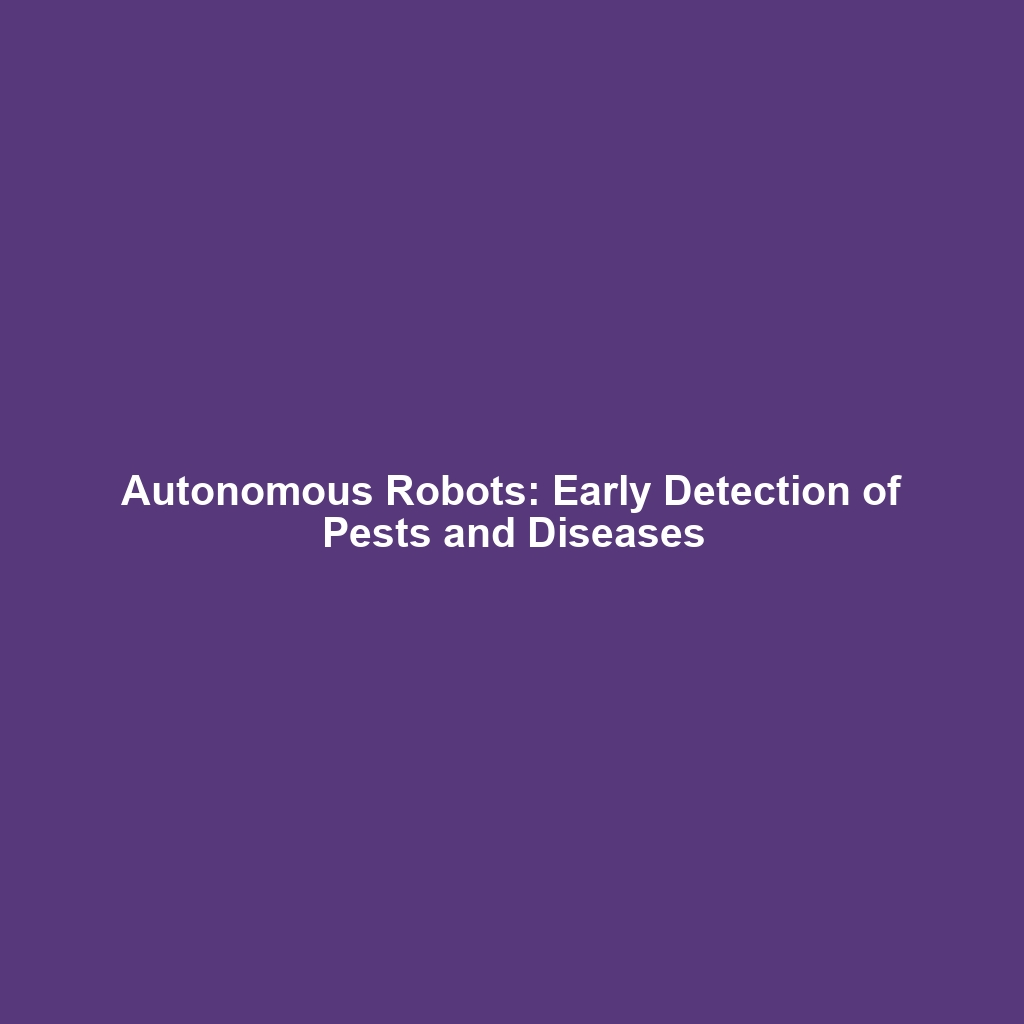Autonomous Robots’ Role in Detecting Early Signs of Pests and Disease
Introduction
As the agricultural landscape evolves rapidly, autonomous robots play a crucial role in safeguarding crops against pests and diseases. These advanced machines, equipped with cutting-edge technology, enable early detection mechanisms that are vital for maintaining crop health and maximizing yields. Understanding the significance of autonomous robots in this context not only highlights their importance in agriculture but also underscores their transformative potential in various sectors. This article delves into the multifaceted role of autonomous robots in detecting early signs of pests and diseases, enriching the conversation around autonomous technology within the agricultural context.
Key Concepts
The integration of autonomous robots in agriculture encompasses several fundamental concepts:
1. Remote Sensing Technologies
Utilizing sensors and imaging technologies, autonomous robots can identify stress signs in plants that may indicate pest infestations or diseases.
2. Data Analytics
These robots analyze data collected from fields to predict potential outbreaks before they escalate, enabling timely intervention.
3. Machine Learning Algorithms
By employing machine learning, autonomous robots improve their pest and disease detection capabilities over time, enhancing their reliability and efficiency.
Applications and Real-World Uses
The applications of autonomous robots in detecting early signs of pests and diseases are diverse and impactful:
- Crop Monitoring: Robots equipped with drone technology provide aerial inspections to identify abnormal plant behavior indicative of pest infestations.
- Precision Agriculture: These robots facilitate targeted interventions by analyzing specific areas that show distress, drastically reducing the use of pesticides.
- Data Collection: Autonomous robots gather and report environmental data, allowing farmers to make informed decisions about their crops.
Current Challenges
Despite the advancements, the challenges of autonomous robots in detecting early signs of pests and disease persist:
- Cost of Technology: High initial investments in autonomous systems can be a barrier for smallholder farmers.
- Integration with Existing Systems: Difficulty in incorporating robotic solutions into traditional farming practices.
- Regulatory Issues: Compliance with agricultural regulations varies regionally, potentially limiting deployment.
Future Research and Innovations
The future of autonomous robots in pest and disease detection looks promising, with several innovations on the horizon:
- Advanced AI Techniques: Incorporating deep learning to enhance the accuracy of detection algorithms.
- Collaboration with IoT: Developing systems that leverage the Internet of Things to foster real-time monitoring and response.
- Sustainable Practices: Research focused on integrating sustainable agricultural practices into robotic systems for environmental conservation.
Conclusion
In summary, the role of autonomous robots in detecting early signs of pests and diseases is revolutionizing agricultural practices, offering timely interventions that are crucial for sustainable farming. As research continues and technology evolves, these robots stand to play a more significant role in enhancing agricultural productivity. For further reading on autonomous technologies in agriculture, visit our other articles.
This formatted HTML article is tailored for search engine optimization and provides a comprehensive overview of the role of autonomous robots in pest and disease detection.
